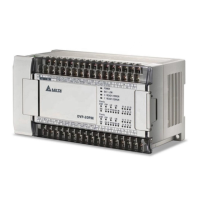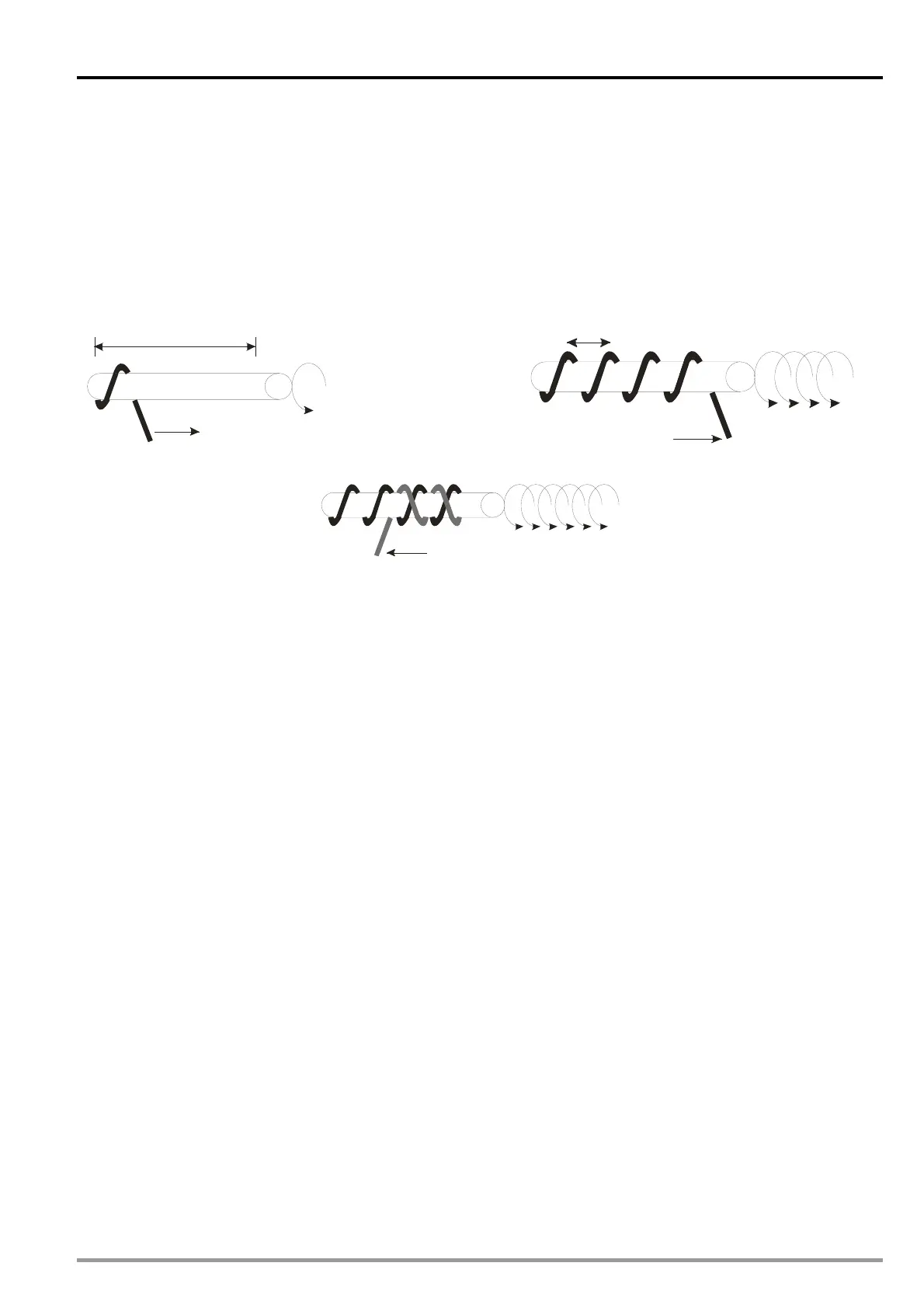9 Electronic Cam
High speed winding on master shaft and slave shaft can be performed by executing single speed
positioning on winding device (3), together with electronic cam operation on coil device (4). Other
operations are similar to general sequential ladder control and can be executed by general functions of
PLC.
The movement of winding shafts and coil shafts are explained as below. The coil shaft (Slave) follows
the winding shaft (Master) and reciprocates within the range of single layer in certain proportion with
winding shaft. At the beginning, Slave starts at the left end and moves one coil space as diagram (A).
When Slave moves to the right end of the single layer range as indicated in diagram (B), the moving
direction of Slave reverses as diagram (C). When Slave reaches the left end of single layer range, the
moving direction of Slave reverses again.
Range(rounds) of single layer
(A)
Total rounds of winding
Coil spacin
(B)
(C)
From the above winding movements, there are 3 major input parameters: 1. rounds per layer, 2. total
rounds of winding, and 3. coil spacing (The value of coil spacing is calculated by adding coil diameter
with the space between each round). In addition, Mechanical parameter (mm/pulses) is required for
obtaining the Master/Slave (winding shaft/coil shaft) proportion. Mechanical parameter consists of
mechanism parameter and servo parameter. Mechanism parameter is the moving distance per round
(mm/revolution) and servo parameter is the pulses per round (pulses/revolution) obtained by multiplying
the electronic gear ratio. Mechanism parameter (mm/revolution) divided by servo parameter
(pulses/revolution) equals the mechanical parameter (mm/pulses). After the parameters are ready,
apply cyclic electronic cam on X axis (Slave) because the coil shaft reciprocates cycle by cycle, and
single speed positioning on Y axis (Master) because the winding shaft moves on in the same direction.
DVP-20PM Application Manual
9-53

